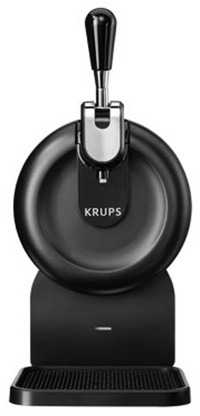Hopsy Sub Compact Is a Good (But Pricey) Keurig for Draft Beer
The Sub Compact is a smaller version of Hopsy's kegerator that turns beer into a subscription service.
Hopsy's Sub Compact kegerator (currently selling for $139.99, with two mini-kegs) is the brand's second product that brings the draft beer experience to your kitchen or living room. And while it may take some getting used to, it will certainly become a beloved item for a certain kind of beer lover.
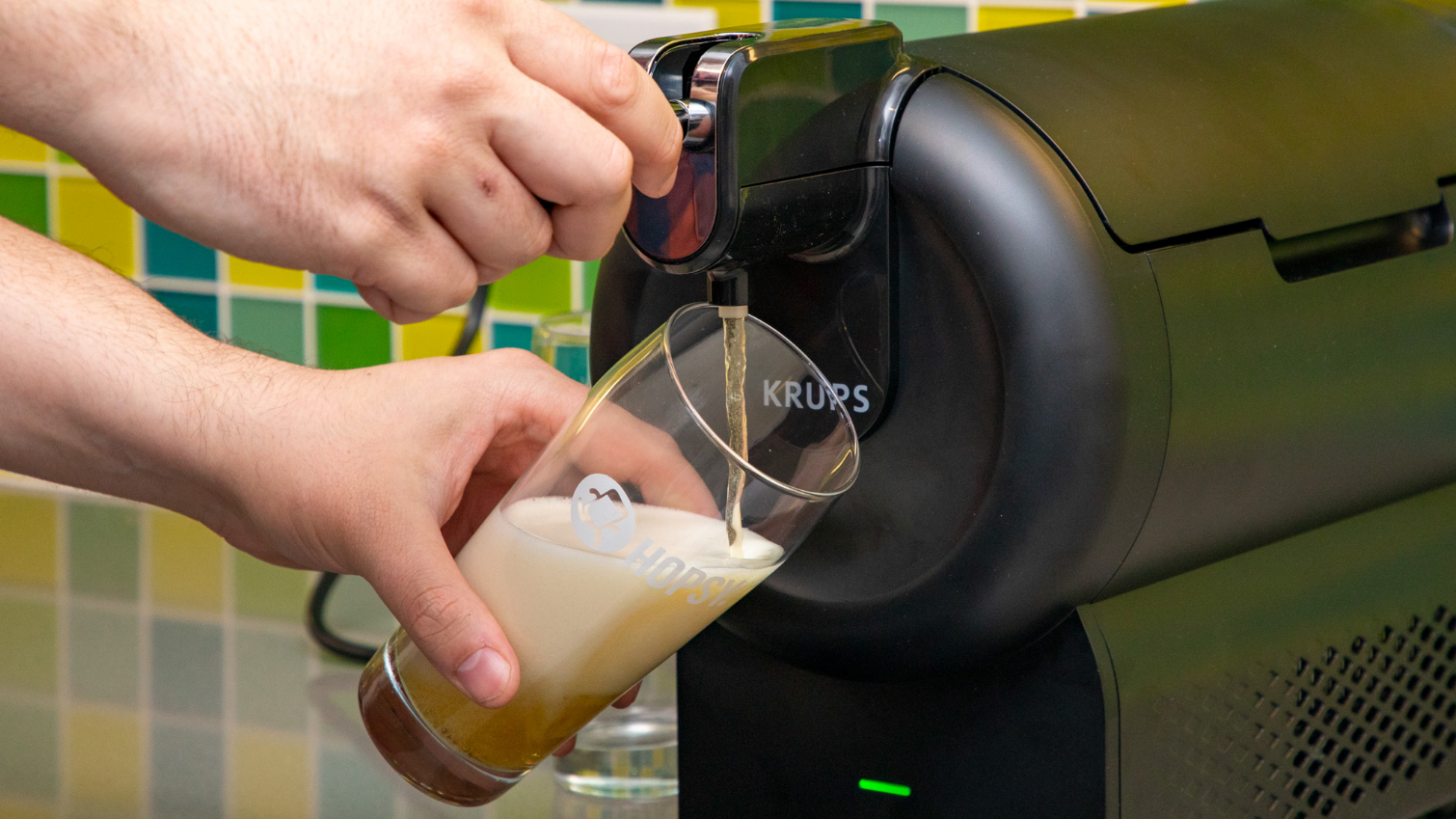
The Sub Compact's biggest feature is its smaller size as compared to the original Hopsy Sub, which is still available on Amazon, at $99. The two work with the same-size mini-kegs, but the new model's not as wide as the original, a change designed for increasingly crowded kitchens and smaller apartments.
The Beer
The Sub Compact works only with beer sold by Hopsy, as the unit supports only the company's mini-kegs, also called torps (they look like small torpedos). Don't worry about selection, though, as Hopsy works with both big brands (including Heineken, Dos Equis and Lagunitas) and small craft brewers (including Gun Hill from New York, Sonoma Springs from California and Blue Nose from Illinois).
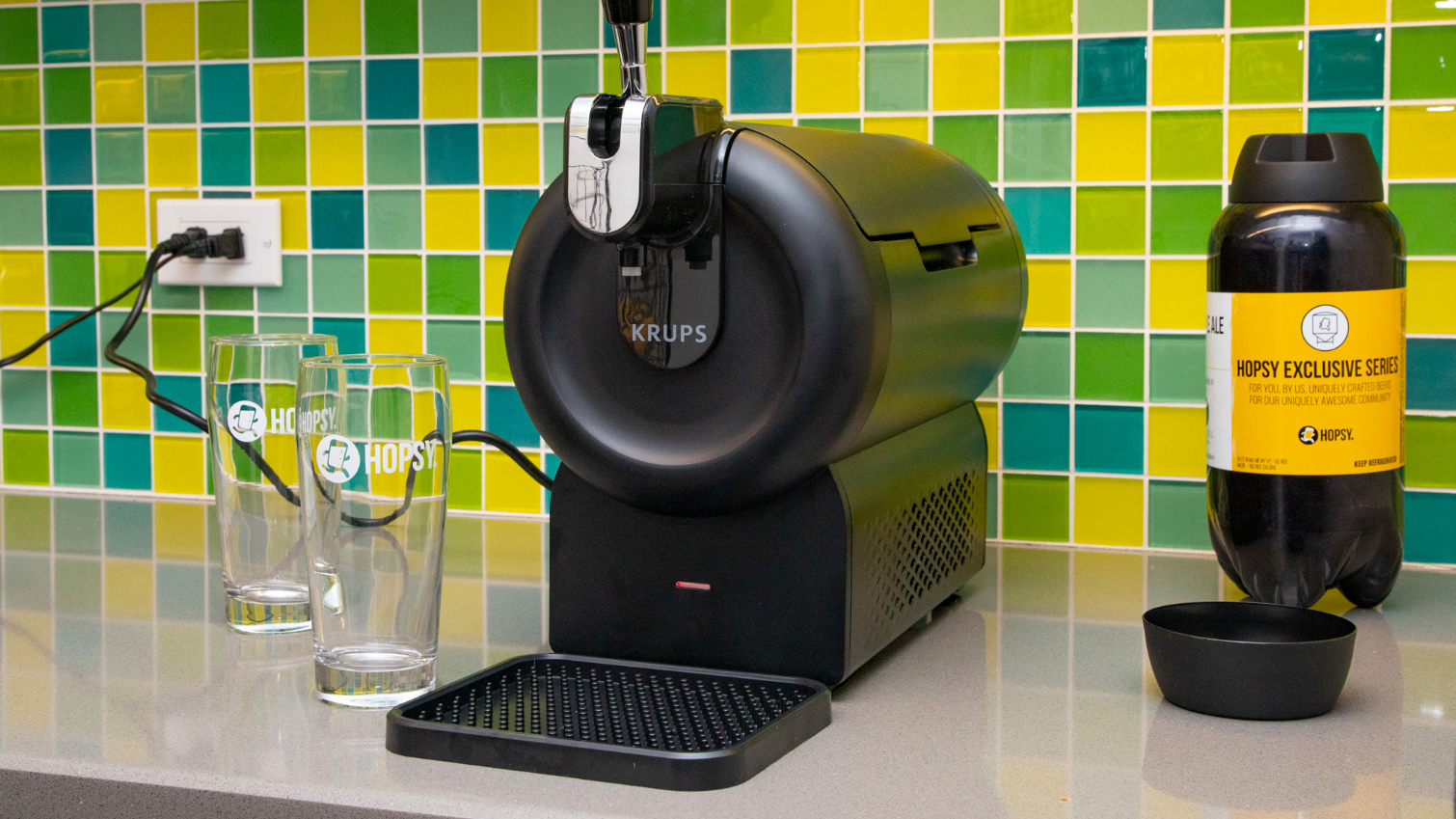
Of the beer we tapped from the Sub Compact, the Tom's Guide team (myself especially) preferred Sloop Brewing's Juice Bomb, a New England-style India pale ale known for its citrus flavor and hazy complexion. The Squabble American Pale Ale, a Hopsy exclusive brewed by Gun Hill, also won praise from the office. The pilsner from Brand Up (Urtyp), which Hopsy imported, didn't win any favor with our office's taste buds.
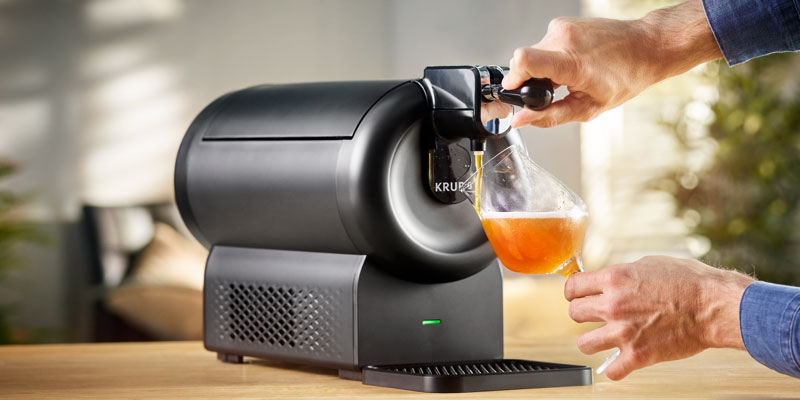
If you're familiar with Keurig's K-Cups, think of the Sub's mini-kegs as similar but different. While they're proprietary canisters that are distributed from a centralized source (Hopsy), the beer is not being significantly modified by the Sub Compact, it's just being tapped.
The Sub Compact: What's new
About the size of a tall coffee pitcher, the Sub Compact is 30 percent narrower than the Sub, Hopsy's original mini-kegerator. The other major difference is a new tap mechanism, which allows for what Hopsy calls a more natural pour.
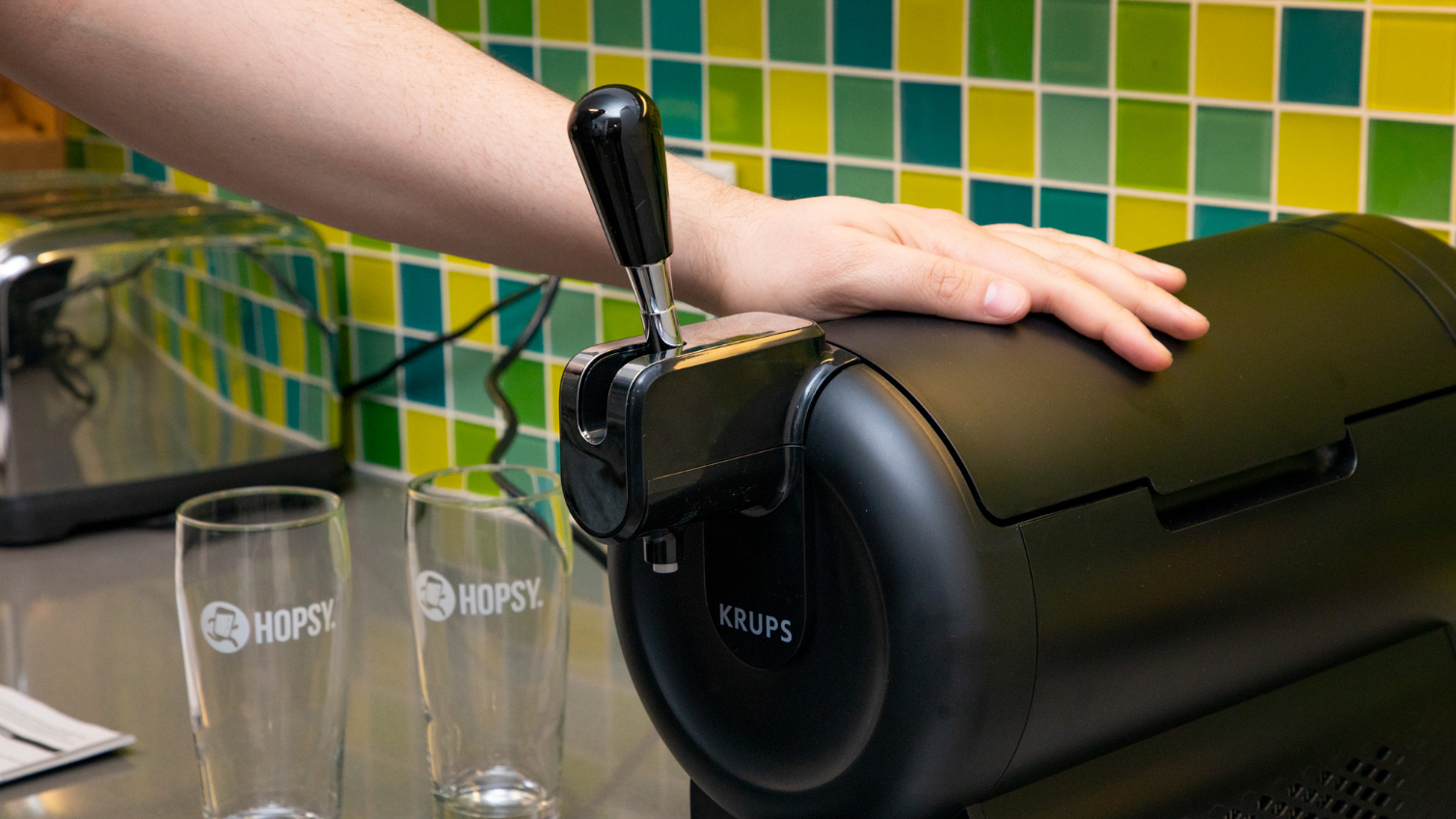
Also, you open the new model from the top, rather than the front. While this may sound like an insubstantial difference, it does have an effect: It allows you to pop the lid and check which kind of mini-keg is installed. (Hopsy suggests you don't remove a mini-keg until it's finished.)
Also of note, the Sub Compact carries the Krups kitchen appliance branding, so it's a collaborative product that isn't sold on the well-established Krups brand.
The Pitch
The Hopsy way doesn't begin and end at the purchase of the Sub Compact, but also involves buying (or subscribing to) mini-kegs from Hopsy itself. À la carte mini-kegs run $20.99 and pack about 4 pints per package, and that price is a little steep. If you look around your nearby stores, a six-pack of nice beer will typically run you anywhere from $13 to $18.
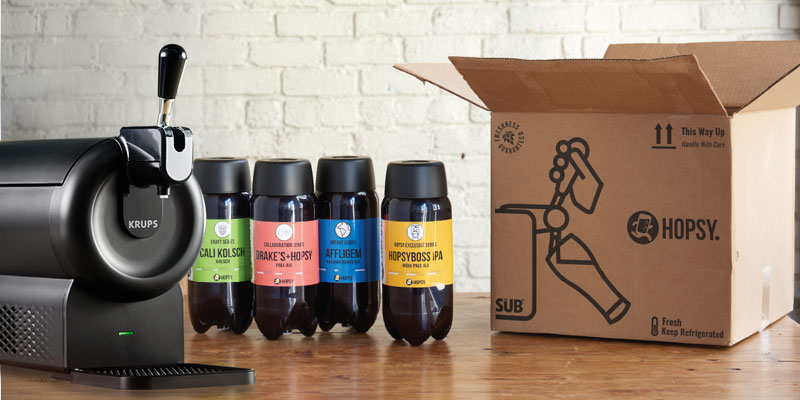
The price gets better if you become a subscriber, because everything is a service these days. Hopsy offers three options: six mini-kegs every four weeks ($89.94 per cycle, which works out to $14.99 per mini-keg), six mini-kegs every six weeks (same pricing as above) or four mini-kegs every six weeks ($59.96 per cycle, or $14.99 per mini-keg). You're not obligated to continue with the subscription, as you can pause, skip or cancel shipments as you please.
Club benefits are as follows: the aforementioned discount, recommendations and suggestions — you work with Hopsy to create a flavor profile (which you don't need to follow) — and choice of delivery date.
The Process and the Pour
First off, I'd refrigerate your mini-kegs the second they get in, at least the one you're looking to consume first. The sooner you do that, the easier time you'll have when you're looking to drink. Otherwise, you're waiting 12 hours for the Sub Compact's red light to turn green and bring the mini-keg to the correct temperature.
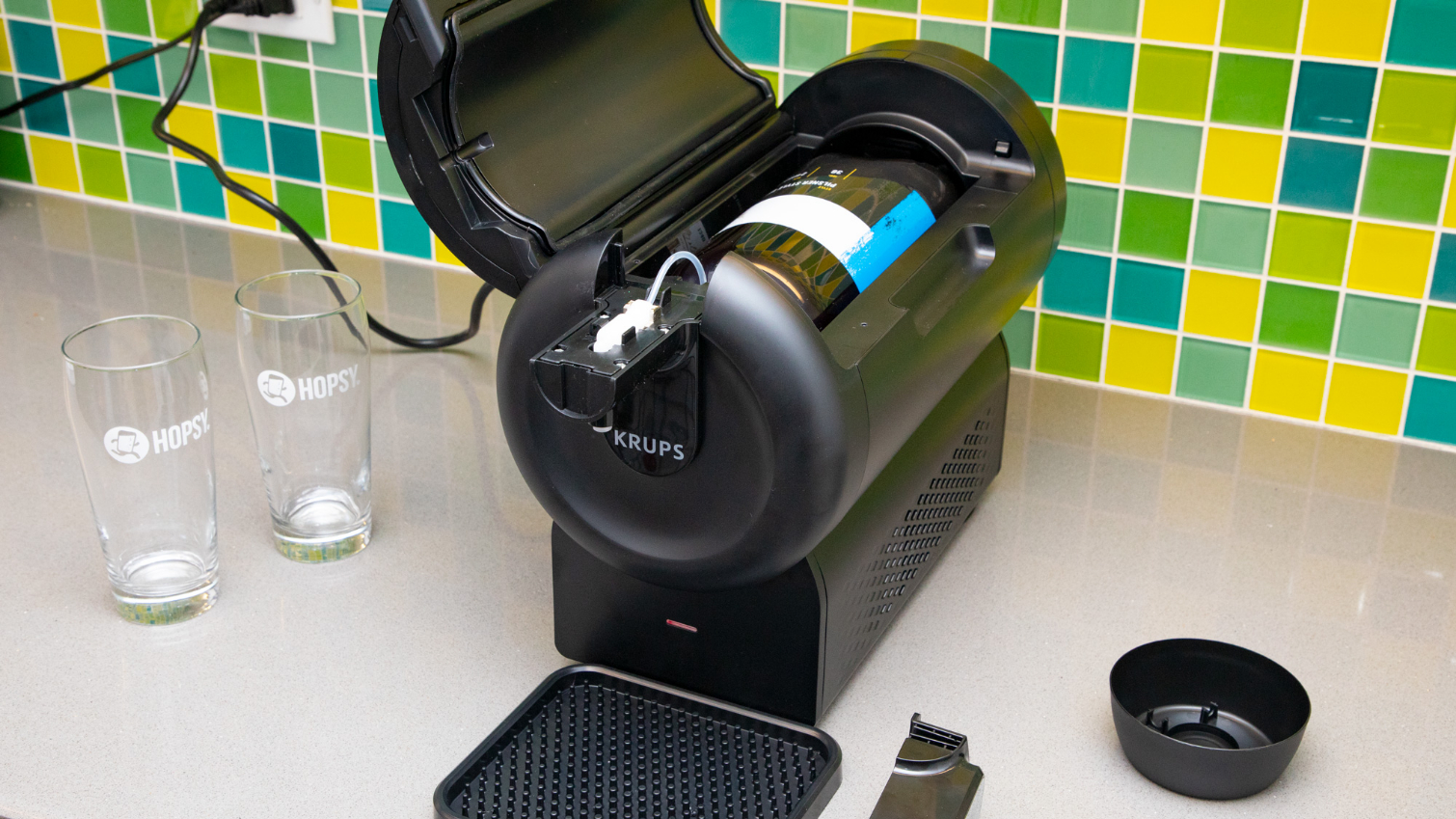
Using the Sub Compact is quite easy. After you plug it into a power outlet, you just pop the top off a mini-keg, push the mini-keg into the Sub Compact (with the rubber-hose end pointing forward), and snake and snap the hose through the hole and fixture in its front.
When it got time to pour, I found an accidental challenge, as I didn't read the manual line for line. I tried to use the Hopsy as I'd seen regular bar taps used, with a gradual move of the tap and not a hard pull. This methodology turned the mini-keg of pilsner into a foam party.
MORE: PicoBrew Freestyle Lets You Craft Your Perfect Beer
It turns out I made two central mistakes. That less-than-hard pull creates air pockets, which produce tons of foam. Had I gone hard from the start, the pilsner would have been tapped better. And I didn't hold the mouth of the glass close enough to the tap itself, which also creates foam.
My Outlook
The Hopsy way, as compared to the typical approach of buying beer at a nearby store, reminds me of how vinyl records compare to Spotify. Sure, casual beer drinkers will wonder what the big deal is, as you're drinking the same kinds of beer in both situations. (Hopsy has exclusives, but it doesn't have every beer.) It's just that some people prefer the taste of draft, just as some prefer the sound of vinyl.

For draft beer lovers, it's practically the dream: a way to bring the bar home, minus the riffraff. As someone who appreciates a well-poured beer at the bar adjacent to his local Alamo Drafthouse Cinema, I understand the value of this experience. When it comes time to find a good present for the beer aficionado in your life, the Sub Compact is definitely worth considering.
A question raised by one of my colleagues, though, rings true in my head: "What's wrong with a six-pack?" To all asking that question, though, I'll say that nothing's wrong with store-bought beer, but this is a delight that some will love. If and when the sale pricing (it's currently $139 for a Sub Compact with two mini-kegs) disappears and the full $339 price returns, though, it's going to be a luxury that's harder to justify.
Credit: Tom's Guide
Sign up to get the BEST of Tom's Guide direct to your inbox.
Get instant access to breaking news, the hottest reviews, great deals and helpful tips.

Henry is a managing editor at Tom’s Guide covering streaming media, laptops and all things Apple, reviewing devices and services for the past seven years. Prior to joining Tom's Guide, he reviewed software and hardware for TechRadar Pro, and interviewed artists for Patek Philippe International Magazine. He's also covered the wild world of professional wrestling for Cageside Seats, interviewing athletes and other industry veterans.
